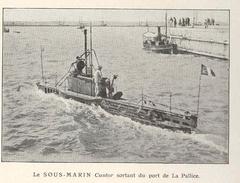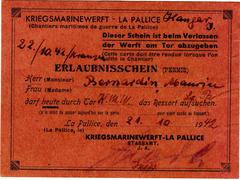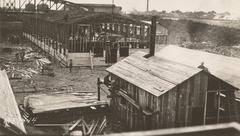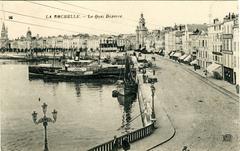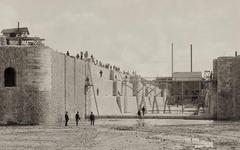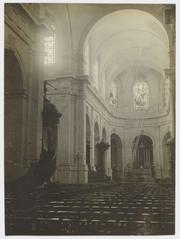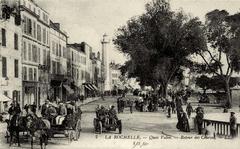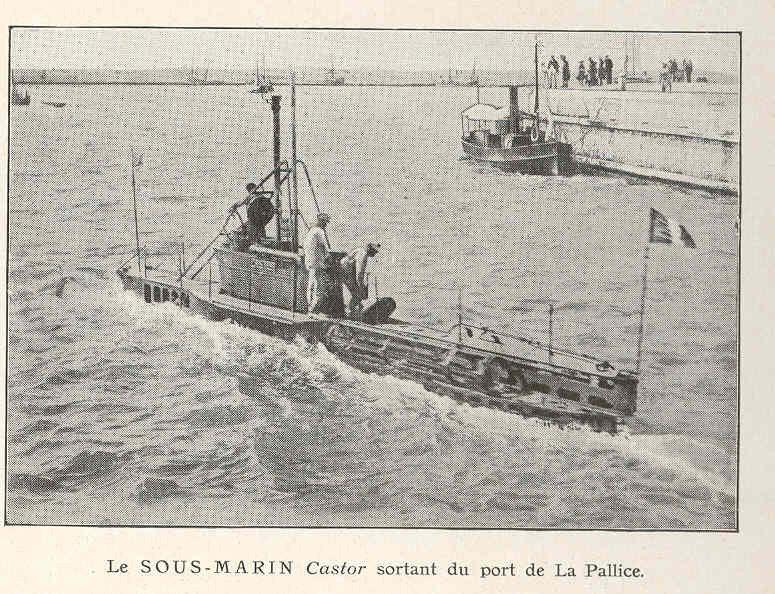
La Rochelle Submarine Base: Visiting Hours, Tickets, and Historical Sites Guide
Date: 15/06/2025
Introduction to La Rochelle Submarine Base and Its Historical Significance
Nestled in the port district of La Pallice on France’s Atlantic coast, the La Rochelle Submarine Base is a monumental relic of World War II naval history and engineering. Built by German forces starting in 1941, it served as a critical hub for U-boat operations during the Battle of the Atlantic, thanks to its strategic location enabling rapid deployment against Allied shipping routes. The formidable structure, with its double-layered reinforced concrete roof, was designed to withstand even the most intense Allied bombing raids, showcasing technological innovation and the strategic urgency of the era (historicalsites.se, BattlefieldsWW2.com, Normandy Bunkers).
While the base itself remains closed to the public due to its location within an active commercial port and ongoing military use, visitors can appreciate its imposing exterior and rich history through nearby museums, guided boat tours, and special exhibitions. The adjacent Bunker La Rochelle museum provides one of the few opportunities to explore the interior life of submarine command, preserving original features and artifacts (La Rochelle Ocean Pass, Le Bunker de La Rochelle).
This guide is crafted to provide essential information about La Rochelle Submarine Base visiting hours, ticketing, accessibility, and nearby attractions. Whether you’re passionate about military architecture, fascinated by naval operations of WWII, or simply seeking to explore one of La Rochelle’s most significant historical sites, this article will help you plan a meaningful and well-informed visit. Practical tips on transportation, tours, and cultural experiences in La Rochelle ensure your journey is as enjoyable as it is educational.
For further insights and up-to-date visitor information, consult local tourism resources and historical portals linked throughout this guide (La Rochelle Tourism, Compagnie Interîles).
Historical Overview
German Occupation and Strategic Importance
After France’s defeat in June 1940, German forces occupied the Atlantic coast, selecting La Rochelle as one of five major U-boat bases alongside Brest, Lorient, Saint-Nazaire, and Bordeaux. This positioning allowed German submarines to operate efficiently against Allied shipping, playing a pivotal role in the Battle of the Atlantic (historicalsites.se).
Construction and Features
Construction began in April 1941 and, by 1943, ten heavily fortified submarine pens were completed within La Pallice’s commercial port. The base’s reinforced concrete walls and ceilings—up to 7.3 meters thick in places—were engineered to withstand massive Allied bombing. The facility included workshops, living quarters, and a protected lock system, enabling secure and efficient submarine operations (uboat-bases.com).
Wartime Operations and the Allied Siege
Throughout WWII, La Rochelle was a critical hub for German U-boat missions. Following the Normandy landings in 1944, the base was isolated and became part of the “Atlantic pockets,” remaining under German control until May 7, 1945. Remarkably, the city and base were spared from destruction during the siege (en.wikipedia.org).
Postwar Legacy
Thanks to its robust construction and limited war damage, the La Rochelle submarine base remains largely intact today, serving as both a historical landmark and a cultural icon. It has also been used as a filming location for major productions, including “Das Boot” and “Raiders of the Lost Ark” (historicalsites.se).
Architectural and Military Significance
The La Rochelle Submarine Base was among the most advanced German U-boat bunkers along the French Atlantic coast. Its design incorporated thick layered concrete roofs, multiple submarine pens, and advanced defensive features that made it nearly impervious to conventional Allied bombs (BattlefieldsWW2.com). Specialized “Tallboy” bombs were eventually used in attempts to penetrate its defenses.
Inside, the base featured a 300-square-meter command blockhouse with officers’ quarters, technical rooms, and original marine-themed frescoes (La Rochelle Ocean Pass).
Visiting the La Rochelle Submarine Base
Can You Visit the Base?
The main bunker at La Pallice remains closed to the public for security and operational reasons. However, visitors can view the formidable exterior from nearby public areas, especially along Elmar Delmas street. The site offers excellent photographic opportunities of the massive concrete pens and historic architecture.
Museums and Guided Tours
Although interior access to the main bunker is restricted, you can visit the Bunker La Rochelle museum in the city center. Housed in a preserved WWII blockhouse, this museum offers artifacts, reconstructed scenes, and original frescoes detailing the life of submarine commanders.
For a close-up view of the base’s exterior and the city’s harbors, Compagnie Interîles operates guided boat tours year-round, providing historical commentary and unique perspectives.
Visiting Hours and Tickets
- La Pallice U-boat bunker: Not open to the public; exterior visible year-round from public roads.
- Bunker La Rochelle Museum: Open daily, 10:00–19:00 (check for seasonal adjustments). Tickets ~€5, discounts available (La Rochelle Ocean Pass).
- Boat Tours: Schedules and prices vary by season. Advance booking recommended.
Accessibility
- Viewing areas: Accessible via public transport or on foot; some uneven terrain.
- Bunker Museum: Wheelchair accessible, with the exception of a narrow entrance and stairs.
- Boat tours: Suitable for most visitors; inquire about accessibility when booking.
What to Wear and Bring
The port area is windswept and can be chilly even in summer. Wear comfortable, closed-toe shoes and bring a light jacket. For boat tours, bring sun protection and a windbreaker.
Safety and Regulations
Do not attempt to enter the main submarine base—entry is strictly prohibited. Remain on marked paths and respect all signage.
Nearby Attractions
- La Rochelle Aquarium: One of Europe’s largest aquariums.
- Maritime Museum: Covers La Rochelle’s naval history.
- Old Port and Towers: Medieval towers and scenic walks.
- Bunker La Rochelle: WWII occupation exhibits in a preserved air-raid shelter.
FAQ
Can you visit inside the La Rochelle Submarine Base?
No, interior access is not permitted due to military and safety reasons, but the base can be viewed from public areas.
What are the visiting hours for related historical sites?
The Bunker Museum is open daily; check official websites for seasonal updates.
Are guided tours available?
Yes, guided boat tours and museum tours are available; advance booking is recommended.
Is the site accessible for visitors with disabilities?
Public viewing areas and the Bunker Museum are generally accessible, though some areas may present challenges.
Visual and Interactive Media Suggestions
Incorporate high-quality images of the base’s exterior, museum exhibits, and boat tours. Use descriptive alt text such as “La Rochelle Submarine Base historical site” and “Guided tour at Bunker La Rochelle museum.” Consider embedding a virtual tour or interactive map.
Conclusion
The La Rochelle Submarine Base stands as a powerful testament to World War II history and military engineering. While the main bunker is closed to visitors, the surrounding area, museums, and guided tours provide a rich context for understanding its significance. Plan your visit to explore La Rochelle’s wartime legacy, and stay updated by consulting La Rochelle Tourism and related resources.
Enhance your experience by downloading the Audiala app for curated historical tours, updates, and exclusive content. Stay connected via social media for the latest news and visitor tips.
References and Further Reading
- historicalsites.se
- BattlefieldsWW2.com
- Allied siege of La Rochelle (Wikipedia)
- La Rochelle Ocean Pass
- Normandy Bunkers
- Le Bunker de La Rochelle
- La Rochelle Tourism
- Compagnie Interîles boat tours
- Travel Pander
- Atlas Obscura
- Unknown World
